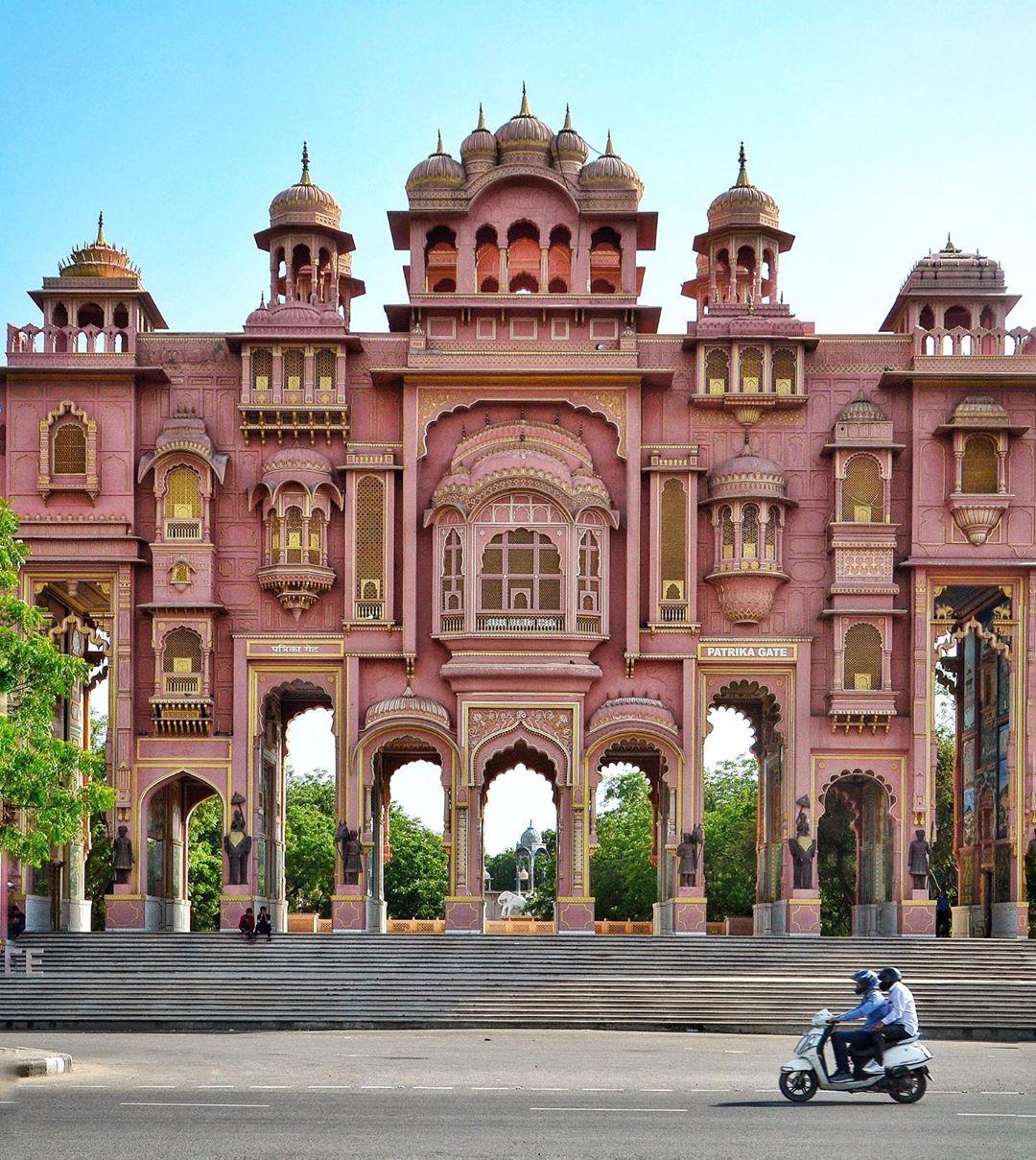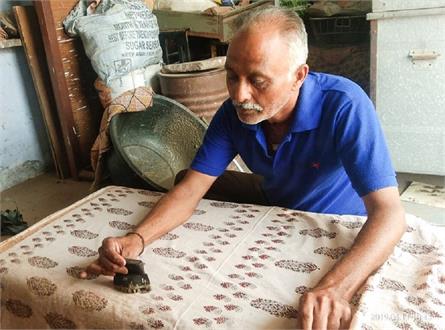Jaipur: The Timeless Tapestry of the Pink City

Jaipur, a city known for its rosy charm and vibrant culture, stands as a mesmerizing jewel in the crown of India. Fondly referred to as the "Pink City," Jaipur's rich history, resplendent architecture, and enduring traditions beckon travelers from around the world. Jaipur in the northwestern state of Rajasthan, India, has been recognized as a UNESCO World Heritage Site. The walled city of Beyond the tourist brochures and clichéd narratives, Jaipur unfolds like an intricate tapestry, each thread representing a unique facet of its existence.
Also Read: UNESCO World Heritage Sites of India
The History of Jaipur | Formation of Pink City | Brilliance of the Architech
Jaipur's narrative begins with the illustrious reign of Maharaja Sawai Jai Singh II. This 18th-century ruler was not only a monarch but a scholar, astronomer, and mathematician. He envisaged a city that would reflect his vision of grandeur and scientific prowess.
Jai Singh II, with the guidance of the brilliant architect Vidyadhar Bhattacharya, embarked on a remarkable journey of urban planning. The city's layout, based on Vastu Shastra and Shilpa Shastra, embodies a harmonious fusion of aesthetics and functionality.
In 1876, during the rule of Maharaja Sawai Ram Singh, Jaipur was painted pink to welcome the Prince of Wales. This tradition of pink facades has endured, symbolizing the city's warm hospitality. It is a hue that resonates through the alleys, palaces, and hearts of Jaipur's people.
Also Read: Madhya Pradesh The Heart of India
Here are some historic things about Jaipur that you must know:
1. The Pink Transformation
The city's unique pink color, which it is renowned for today, dates back to 1876. During the rule of Maharaja Sawai Ram Singh, the city was painted pink to welcome the Prince of Wales, later King Edward VII, as pink was traditionally associated with hospitality. Since then, Jaipur has retained its distinctive hue, which symbolizes warmth and hospitality.
2. A City of Firsts
Jaipur was ahead of its time in many ways. It boasted a well-planned grid system of streets, making it one of the earliest examples of urban planning in India. The City Palace, Hawa Mahal, Jantar Mantar, and the Amer Fort were architectural marvels that showcased the city's grandeur.
3. Craftsmanship and Heritage
Jaipur's history is also intertwined with its vibrant craftsmanship. The city became a hub for skilled artisans, and it is renowned for its jewelry, textiles, and handicrafts. The markets of Jaipur, such as Johari Bazaar and Tripolia Bazaar, are a testament to the city's rich tradition of craftsmanship.
4. The Royal Legacy
The Kachwaha dynasty, with their stunning palaces and forts, continued to rule Jaipur even after India gained independence. Although their political power diminished, they still hold a significant place in the city's cultural and social life.
5. Modern Jaipur
Today, Jaipur is a vibrant and growing city that has retained its historical charm while embracing modernity. It is a thriving center for education, tourism, and commerce, with a unique blend of old and new.
Jaipur's history is a tapestry of visionary leadership, architectural splendor, and vibrant traditions. The city's unique pink hue is a reflection of its warmth and hospitality, making it but a living testament to India's rich cultural heritage.
Also Read - Most Famous Shopping Markets in Rajasthan
Fascinating Architechture with ancient principles
Jaipur's architecture is a fascinating blend of ancient Indian architectural principles, Mughal influences, and the unique planning and design concepts introduced by Maharaja Sawai Jai Singh II and his chief architect Vidyadhar Bhattacharya. Here's an overview of the distinct architectural features that define Jaipur:
1. Grid Layout
Jaipur's most prominent architectural feature is its grid-like layout, which is based on the ancient Indian architectural texts of Vastu Shastra and Shilpa Shastra. The city is divided into rectangular blocks, each with wide streets and squares. This planned layout promotes ease of navigation and ensures a harmonious urban design.
2. Pink Sandstone
The buildings in Jaipur, especially in the old city, are primarily constructed from pink sandstone, which gives the city its characteristic pink hue. This use of pink sandstone is a unique architectural feature and symbolizes hospitality.
3. Hawa Mahal (Palace of Winds)
This iconic five-story palace is renowned for its intricately designed façade with 953 small windows, known as jharokhas. The lattice design of these windows allowed royal women to observe street festivals and activities while maintaining their privacy.
4. City Palace
The City Palace complex is a magnificent example of Indo-Saracenic architecture. It combines Rajput and Mughal architectural elements, featuring ornate courtyards, beautiful palaces, and museums. The Chandra Mahal and Mubarak Mahal within the complex are notable structures.
5. Jantar Mantar
Built by Maharaja Sawai Jai Singh II himself, the Jantar Mantar is an astronomical observatory and a UNESCO World Heritage site. It comprises a collection of 19 astronomical instruments, including the world's largest stone sundial. The precision and innovation of these instruments highlight Jaipur's scientific heritage.
6. Amber Fort
Located just outside the city, the Amber Fort is a majestic hilltop fortress constructed from yellow and pink sandstone and marble. Its intricate architecture includes stunning palaces, intricate frescoes, and the Sheesh Mahal (Mirror Palace).
Also Read - List of top 8 schools in Jaipur, Rajasthan
7. Stepwells
Jaipur boasts several ancient stepwells, such as the Panna Meena ka Kund, which are not only architectural marvels but also served as sources of water and community spaces. These stepwells demonstrate the fusion of art and utility in Jaipur's architectural heritage.
8. Mughal Gardens
The influence of Mughal garden design can be seen in the beautiful gardens of Jaipur. These lush, well-maintained gardens, such as Ram Niwas Garden and Sisodia Rani Garden, provide a serene contrast to the city's bustling streets.
9. Havelis
Jaipur features numerous havelis (traditional Rajasthani mansions) adorned with intricate frescoes, jharokhas, and courtyards. These havelis offer a glimpse into the opulent lifestyle of the city's aristocracy.
10. Modern Architecture
In addition to its historical architecture, Jaipur has seen the development of modern buildings and infrastructure. Contemporary architects have blended traditional designs with modern materials and techniques, resulting in a city that continues to evolve while preserving its heritage.
Also Read: 9 Haunted Places in Rajasthan, you need to Avoid It
Culture and Traditions
The culture and traditions of the Jaipur can be seen through the vibrant markets, block printing, fairs and festivals, and hospitality.
1. Vibrant Markets
Jaipur's bustling markets are a testament to its rich culture. Johari Bazaar dazzles with gemstones and jewelry, while Tripolia Bazaar's vibrant fabrics and textiles showcase the city's craftsmanship. The markets breathe life into Jaipur's ancient trading legacy.
2. The Art of Block Printing
The city is renowned for its traditional art forms, none more so than block printing. Jaipur's artisans create intricate patterns and motifs using wooden blocks and vibrant dyes, a craft passed down through generations.
3. Fairs and Festivals
Jaipur's calendar is adorned with vibrant celebrations. The Elephant Festival, Gangaur Festival, and the world-famous Jaipur Literature Festival bring the city to life, making it a cultural hotspot.
4. Rajput Hospitality
The people of Jaipur, echoing the city's pink walls, exude warmth and hospitality. Visitors often find themselves welcomed into homes, sipping chai with locals, and sharing stories that transcend language barriers.
Modern Jaipur
The modern Jaipur has so many innovations with transformations that has great results. Here is the detailed information of modern Jaipur given below.
1. Educational Hub
Jaipur's transformation into a modern metropolis is a testament to its adaptability. The city has become a thriving center for education, hosting numerous institutions and universities, fostering knowledge and innovation.
2. Emerging Technology Hub
The Pink City is not just about palaces and traditions; it is also a hub for technological advancement. IT parks and startup incubators have taken root, indicating a bright future that respects its historical roots.
3. Heritage Preservation
Jaipur doesn't just embrace modernity; it's keen on preserving its heritage. Conservation efforts ensure that ancient structures are maintained for generations to come, allowing history to coexist with the present.
Beyond the Brochures
Beyond brochures , there are also another treasures like temples, havelis, nightlife, etc. that offer a new experience to feel the Jaipur city.
1. Hidden Gems
While the Amber Fort and Hawa Mahal rightfully claim the limelight, Jaipur offers hidden gems for the intrepid explorer. Stepwells like Panna Meena ka Kund, ornate havelis, and lesser-known temples offer a glimpse into the city's lesser-explored treasures.
2. Jaipur by Night
As the sun sets and the city dons a new identity, Jaipur's nightlife comes alive. Rooftop restaurants, bustling markets, and cultural performances paint a vibrant picture of the city after dark.
3. Jaipur's Love for Cinema
Cinema is ingrained in Jaipur's culture. Raj Mandir Cinema, an iconic art deco cinema hall, is a testament to the city's deep love for movies and entertainment.











